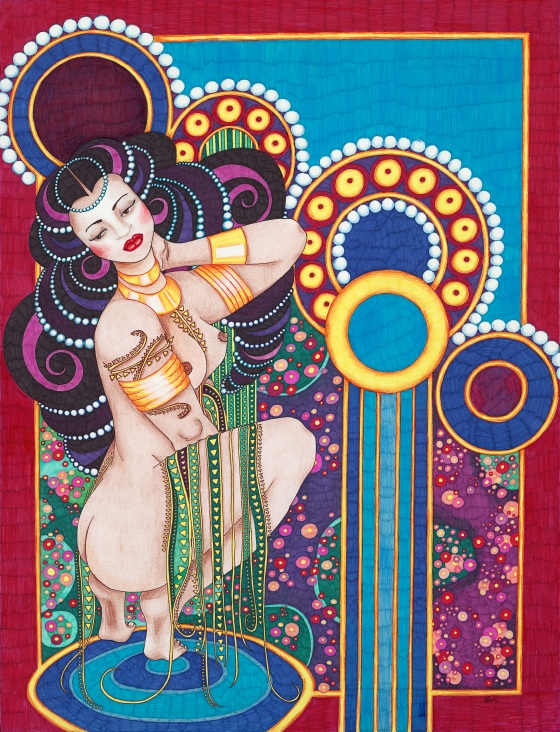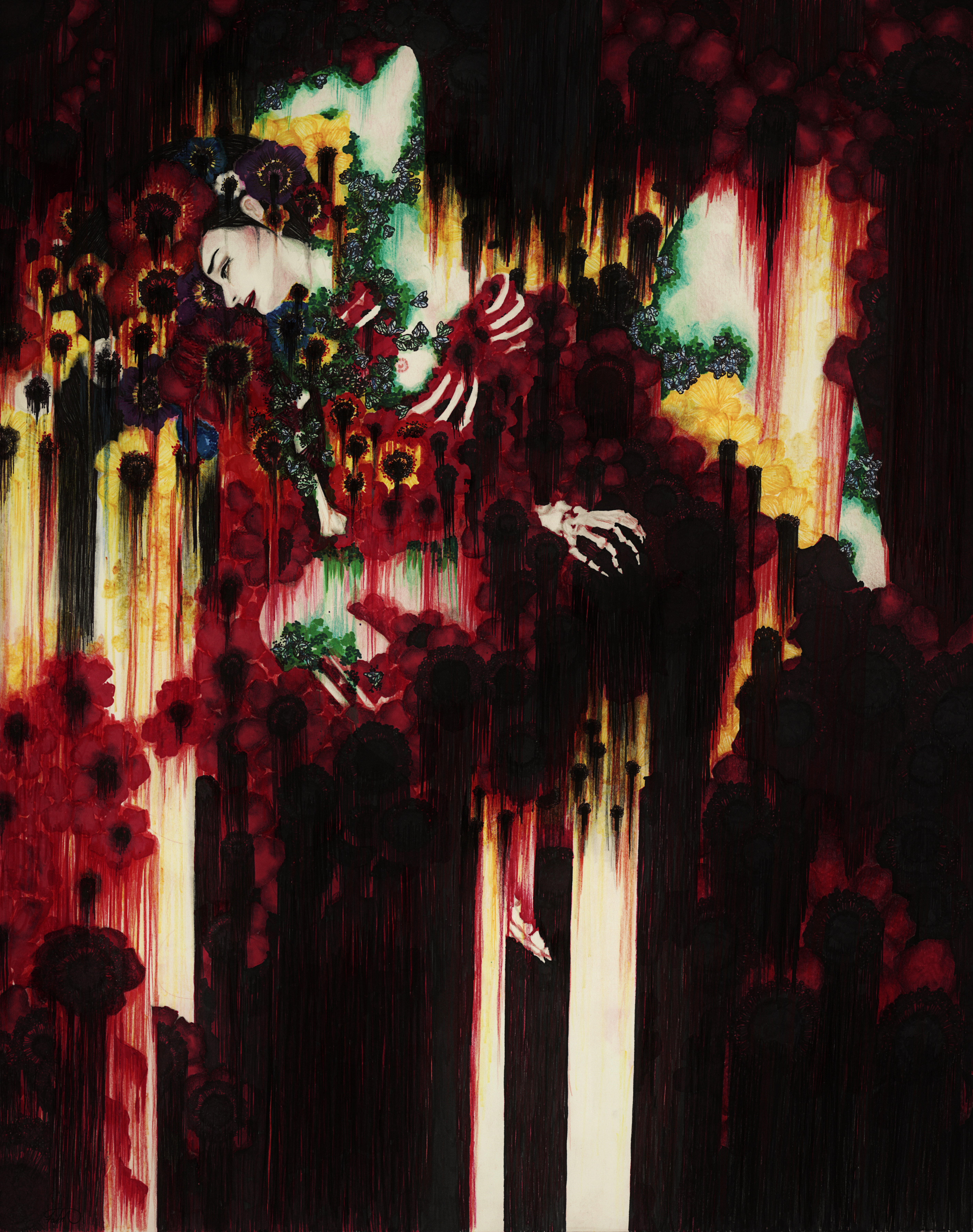Last year I was commissioned to create a piece for the Vagina Monologues (as a donation).
I immediately felt the challenge of this. How and what was I going to draw…a vagina? (Insert giggles and shielding of eyes here.)
I was told that it didn’t necessarily have to be a real vagina. I could draw a metaphorical one- think fruit, or flowers, Georgia O’Keefe style.
I actually struggled with this for a while. I’m not sure if I am adequately able to express my feelings on this subject, but I’m going to try. In our society, the human body is not really something to be proud of. Seriously, if you look at advertisements, the body is either portrayed as something to want (something you need to look like, something you want to have, a sex symbol-which isn’t particularly a good thing in most cases), or the body is seen as something shameful, that you need to change (i.e. you are too fat, you need to do this and this to fix it, etc.)
Especially the female body, although we’ve heard this time and time again. I won’t go into huge detail on how females are portrayed in the media.
Even saying the word vagina or typing it, or any version of the word, makes a girl feel almost shameful. It’s just an anatomical term for a specific body part, but as women it’s something we are taught to be ashamed of (whether we are aware of it or not.)
Seriously. Try using the word vagina sometime without feeling some sense of guilt or embarrassment (or maybe I’m just weird because of being raised Catholic. Whatever. Everyone’s got issues.)
That’s why, when I thought about drawing the Vagina Monologues piece, I felt like drawing fruit or flowers would be a cop out. A vagina isn’t a flower and it’s not a fruit. It’s a body part.
There’s a particular story from Eve Ensler’s The Vagina Monologues about a woman going to a “vagina workshop” (strange as that sounds), where everyone was asked to draw a picture of a vagina, or their vagina. I used this as the basis for my own piece and two others.
I call these my Vagina series, because a. they were inspired by the vagina monologues and b. their purpose is to express the female form in a strong, yet sensual way. These are four nude women, crouching against abstract backgrounds, either presenting themselves or masturbating (yes, yes, that is totally what they are doing, get the giggles out now.)
I suppose this is a rebellion against the idea that a female expressing any kind of sexuality is to be considered a slut. At least, I hope that is what is perceived in my artwork. The pieces to me express liberation, in that these women are the masters of their own sexual desire, and have the power to please themselves, where and when they choose by themselves, without someone else being necessary to bring about their pleasure (although that’s totally fine and awesome).
I say liberation also in the sense that, these women express freedom from societal constraint, from being tied to someone else to receive, and the freedom of intoxication with oneself (although that can be a dangerous thing. See “Poppies” above).
I realize that these pieces of artwork could be considered quite offensive to a lot of people.
I actually began a new piece, another commission and another donation, for an event called Shimmy for the Cure (a belly dance event to raise money for breast cancer prevention and awareness). My own grandmother battled (and won) against breast cancer, so in a small way, I feel like I can help with my artwork.

(“The Maiko” Unfinished. 11×14 Sharpie and Colored Pencil. The word Maiko literally translates to “dancing child” (mai = dance, ko = child), but is also referred to as “dancing girl”. A Maiko is an apprentice Geisha who must must undergo a period of training that generally takes 5 years, where she learns the various “gei” (arts) such as dancing, singing, music etc before she becomes a Geisha.)
I’m taking liberties here as far as cultural appropriation goes (I don’t mean to be offensive to Japanese culture at all.) I feel like this piece also gets to be included as part of my vagina series.
The Maiko is about expressing joy and shedding whatever it is that binds you. Her breasts are bare because she doesn’t care about her nudity. She is proud of her body and has no reason to hide it. It is not meant to be sexual (although an artist really doesn’t have control over how their artwork is perceived once they release it to the public).
There are certainly more moving pieces of artwork that have been inspired by those who have battled against breast cancer (and I suggest you check them out. There are even brilliant tattoos on women who have lost their breasts to cancer that are absolutely glorious.), but this is my contribution.
So, if you are offended, I can’t really apologize, as I’ve learned through this project that the naked woman’s body really isn’t something I should be ashamed of.
For more info on the Vagina Monologues, check out Eve Ensler’s book: http://www.eveensler.org/books/the-vagina-monologues/
For more info on Shimmy for the Cure, check out Irie Tribal’s website: http://www.irietribal.com/shimmy-for-the-cure.html












